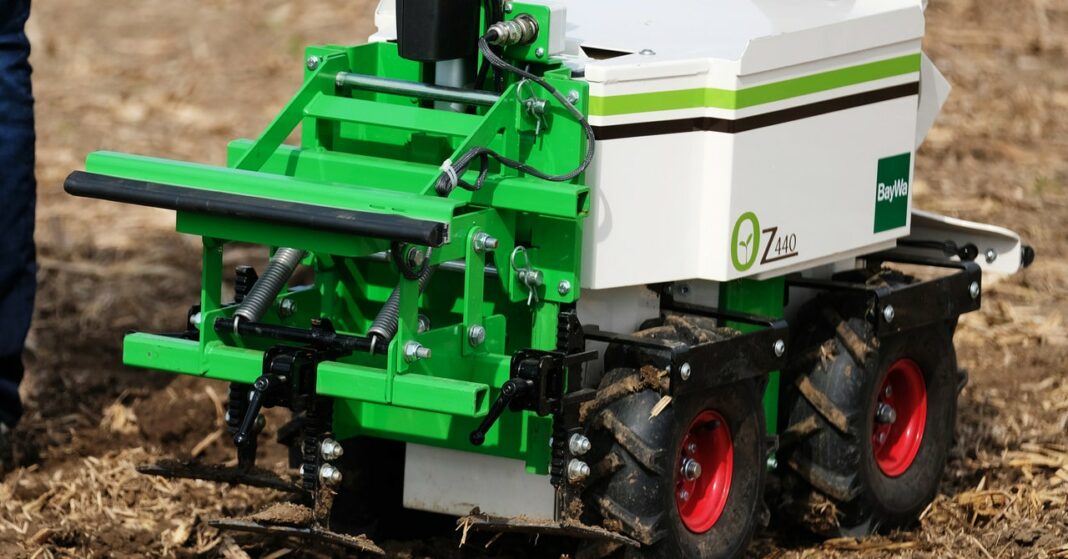This story originally appeared on Undark and is part of the Climate Desk collaboration.
Across Midwestern farms, if Girish Chowdhary has his way, farmers will someday release beagle-sized robots into their fields like a pack of hounds flushing pheasant. The robots, he says, will scurry in the cool shade beneath a wide diversity of plants, pulling weeds, planting cover crops, diagnosing plant infections, and gathering data to help farmers optimize their farms.
Chowdhary, a researcher at the University of Illinois, works surrounded by corn, one of the most productive monocultures in the world. In the United States, the corn industry was valued at $82.6 billion in 2021, but it—like almost every other segment of the agricultural economy—faces daunting problems, including changing weather patterns, environmental degradation, severe labor shortages, and the rising cost of key inputs: herbicides, pesticides, and seed.
Agribusiness as a whole is betting that the world has reached the tipping point where desperate need caused by a growing population, the economic realities of conventional farming, and advancing technology converge to require something called precision agriculture, which aims to minimize inputs and the costs and environmental problems that go with them.
No segment of agriculture is without its passionate advocates of robotics and artificial intelligence as solutions to, basically, all the problems facing farmers today. The extent of their visions ranges from technology that overlays existing farm practices to a comprehensive rethinking of agriculture that eliminates tractors, soil, sunlight, weather, and even being outdoors as factors in farm life.
But the promises of precision agriculture still haven’t been met. Because most of the promised systems aren’t on the market, few final prices have been set, and there’s precious little real-world data proving whether they work.
“The marketing around precision agriculture, that it’s going to have a huge impact, we don’t have the data for that yet,” says Emily Duncan, a researcher in the Department of Geography, Environment, and Geomatics at the University of Guelph in Canada. “Going back to the idea that we want to reduce the use of inputs, precision agriculture doesn’t necessarily say we’re going to be using less overall.”
Even so, Chowdhary, who is a cofounder and chief technical officer of Earthsense, the company that makes those beagle-sized robots, is hopeful that the adoption of his robots will propel farmers well past precision agriculture, to think about the business of farming in a whole new way. Right now, he says, most farmers focus on yield, defining success as growing more on the same amount of land. The result: horizon-to-horizon, industrial monocultures saturated with chemicals and tended by massive and increasingly expensive machinery. With the help of his robots, Chowdhary foresees a future, instead, of smaller farms living more in harmony with nature, growing a diversity of higher-value crops with fewer chemicals.
“The biggest thing we can do is make it easier for farmers to focus on profit, and not just on yield,” Chowdhary wrote in an email to Undark. “Management tools that help reduce fertilizer and herbicide costs while improving the quality of land and keeping yield up will help farmers realize more profit through fundamentally more sustainable techniques.”
